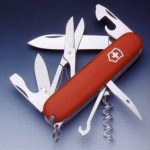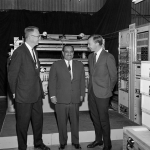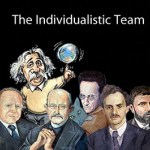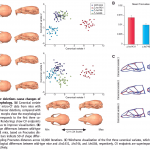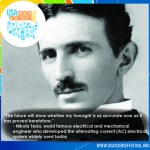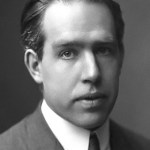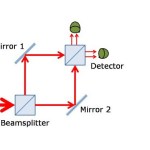Science
Like many cases of children with cancer whose parents tried to deny them curative therapy in the past that I've written about, I've become intensely interested in the case of 10-year-old Amish girl with lymphoblastic lymphoma. Her name is Sarah Hershberg, and, in a rare instance of the state actually stepping in to protect the life of a child whose parents choose quackery over effective therapy, the court actually named a guardian to make medical decisions for her, leading the quacks and quack apologists to lose their minds. Sadly, the Hershbergers have reportedly fled the country, although,…
This one's too brief to be worth a full Orac-ian deconstruction, but it's so juicy that I can't resist mentioning. Regular readers know that Mike Adams, the all-purpose crank who founded NaturalNews.com, is a frequent target topic on this blog. The reason is obvious. Whether it be his support of quackery, his rants against vaccines, his vile attacks on cancer patients, or his New World Order conspiracy mongering and support of the radical fringe in US politics, no one brings home the crazy quite like Mike Adams, and no one brings home such a wide variety and vast quantity of crazy, with the…
In January of 1990, a friend and I designed the ultimate message to an alien civilization.
Okay, admittedly, this wan't a recognized scientific accomplishment. After all, in January of 1990, I was a freshman at Williams. The alien message we designed was part of a first-year Winter Study seminar class. Winter Study, for those not part of the Cult of the Purple Cow is the one-month January term sandwiched between the Fall and Spring semesters, and at the time, first-year students were required to take one of a handful of interdisciplinary seminar courses intended to introduce students to a…
It occurs to me that things have been perhaps overly serious here at the ol' blog for the last couple of weeks. Don't get me wrong. I think I done good lately, if I do say so myself. However, the constant drumbeat of quackery and depressing stories takes its toll after a while. I need a break.
And our old buddy, Deepak Chopra, was kind enough to give it to me.
So what is it this time? Chopra's been a frequent topic of this blog for a long time, albeit nos so much lately. Indeed, longtime readers know that I was the one who coined a term—Choprawoo—for the pseudoprofound metaphysical mystical…
I've had, off and on, a minor obsession with a particular number. That number is 210. Look for it in any review of evolutionary complexity; some number in the 200+ range will get trotted out as the estimated number of cell types in a chordate/vertebrate/mammal/human, and it will typically be touted as the peak number of cell types in any organism. We have the most cellular diversity! Yay for us! We are sooo complicated!
It's an aspect of the Deflated Ego problem, in which scientists exercise a little confirmation bias to find some metric that puts humans at the top of the complexity heap.…
In 1967, a team of scientists hauled a big pile of gear-- electronics, particle detectors, a giant slab of iron-- into the burial chamber at the base of one of the pyramids at Giza. This sounds like a scene from a science fiction or fantasy novel-- throw in the fact that their first attempt was interrupted by the Six Day War and you've got an element of a Tim Powers secret history story-- but the goal wasn't the opening of an interdimensional portal or the raising of the dead. Instead, they were using astrophysics to do archaeology: their detectors measured the number of cosmic ray particles…
The American Association for the Advancement of Science (AAAS) – a maestro at making science come alive for K-12 students, teachers and the public – will once more bring its magic to the Festival next year, returning as a major sponsor and presenting a reprise of its wildly popular "Meet the Scientists" and "Science of Our Senses" hands-on encounters at Festival Expo 2014 – but this time with an added twist!
One of the founding sponsors of the USA Science & Engineering Festival, AAAS – the world's largest general scientific society – has long…
An article titled "Individualism: The legacy of great physicists," by Ricardo Heras. crossed my various social media feeds a half-dozen times on Tuesday, so I finally broke down and read it, and I'm puzzled. The argument is very straightforward-- single-author publications used to be common, now they're not, this might indicate a lack of truly independent work, that would be bad-- but a lot of it is at odds with my reading of the relevant history.
The most jarring thing about the article is the "Individualistic Team" graphic above, including a bunch of pictures of famous physicists who are…
Two papers with a similar theme crossed my social media feeds in the last couple of days. You might think this is just a weird coincidence, but I'm choosing to take it as a sign to write about them for the blog.
So, what are these papers, and what's the theme? One is the final publication of some results I saw at DAMOP and alluded to back in June, and the other is from this post by Doug Natelson. Both look at the transition from few-body to many-body physics.
And this is interesting, why? I mean, isn't it obvious that you just add some more bodies? OK, I guess that does need a little more…
A couple of weeks back, DougT won this year's Nobel betting pool, and requested a post on the subject of funding of wacky ieas:
could you comment on this: http://www.space.com/22344-elon-musk-hyperloop-technology-revealed.html and the phenomenon of the uber-rich funding science in general. It seems to me that there used to be more private funding of science, and there still is a lot. But is government funding crowding out private funding (political question), is government funding necessary for Apollo and CERN b/c it’s so huge, is private funding more “out there” and therefore on the tails of…
[Scene: In the car on the way from soccer to lunch at Five Guys. SteelyKid is in her car seat, studying the Halloween-themed temporary tattoos all over her arms.]
SteelyKid: Do bats fly right-side-up, or upside-down?
Daddy: From the bat's point of view, it's right side up more or less by definition. They do sleep upside down, though.
SK: Yeah, they're the only animals that spend their time upside down. Except sometimes monkeys. Monkeys can hang upside down from their tails, and sleep that way.
D: Well, they can certainly hang upside down sometimes. Sloths spend a lot of time hanging upside…
Ooh, ick, I guess that's a really disgusting zombie image. But anyway, look at this: a cheap and easy DIY photomicrography setup.
Back in the day, I once built a homely kludge consisting of our very expensive microscope, a nice 35mm SLR, and a bit of cardboard and duct tape to hold it exactly the right distance from the eyepieces that did sort of the same thing. And then we had a lab in cell biology at the start of the semester in which students looked at a variety of cell types and were asked to draw them…and all over the room students were just whipping out their cell phones, aiming them…
I'm going to tell you about a paper that was brought to my attention by some poor science journalism, so first I have to complain about the article in the Guardian. Bear with me.
This is dreadfully misleading.
Though everybody's face is unique, the actual differences are relatively subtle. What distinguishes us is the exact size and position of things like the nose, forehead or lips. Scientists know that our DNA contains instructions on how to build our faces, but until now they have not known exactly how it accomplishes this.
Nope, we still don't know. What he's discussing is a paper that…
Nikola Tesla -- Electrical and Mechanical Engineer, Inventor
One of science's most amazing visionaries of all time, Serbian-American inventor Nikola Tesla
was considered a mathematical phenomenon since childhood, being able as a high school
student to perform integral calculus in his head, which initially prompted his teachers to believe that he was cheating!
This famous engineer and inventor was known for developing the alternating-current (AC) electrical system widely used today and the discovery of the rotating magnetic field. Tesla also proved that the Earth can be…
It's that time of year again when people start thinking about Halloween costumes-- SteelyKid is apparently planning to re-use her Peter Pan outfit from last year-- and the conceptual costumes post from a while back has proved enduringly popular at this time of year. If you're not into conceptual art, though, maybe some historical cosplay is more your thing, so here are some totally serious ideas if you want to go to your local physics department's Halloween party as one of the great physicists of the last half-millennium.
Sexy Niels Bohr
This was actually the trigger for this post, when…
Via social media, John Novak cashes in a Nobel Betting Pool win from a while back, asking:
Please explain to me the relationship between energy, entropy, and free energy. Like you would explain it to a two year old child.
Why? There is a statistical algorithm called Expectation Maximization which is often explained in terms of those three quantities. But apparently entropy is hard to understand because all the detail in the analogy is heaped on entropy part (with some side tracks in Kullback-Leibler divergences.) Since I have a background in communication theory, entropy is a perfectly…
One of the things that I've noticed over the last (nearly) nine years blogging about pseudocience, quackery, and conspiracy theories is that a person who believes in one form of woo has a tendency to believe in other forms of woo. You've probably noticed it too. I've lost count of the examples that I've seen of antivaccinationists who are into other forms of quackery, of quacks who are 9/11 Truthers, of HIV/AIDS denialists who are anthropogenic global warming denialists, and nearly every combination of these and many other forms of pseudoscience, pseudohistory, and denialism. Several years…
When I posted congratulating the winner of this year's Nobel betting pool, I received a gentle reminder in email that I'm a Bad Person and still haven't done one of the posts I owe to the 2011 winners. Evan reminded me that he asked for something about the delayed-choice quantum eraser, so let's talk about that a bit, in the traditional Q&A format.
So, what's a delayed choice quantum eraser do? It may or may not have rubbed out mistakes you made while writing, but you don't know until later when somebody else chooses to read it? Nothing physical gets erased. The delayed-choice quantum…
I was pleasantly surprised at how well the What does Science Online Want to Be? post was received-- I kind of expected that to cause more anger than it did. It did prompt a lot of discussion, most of it during the dinner hour in Chateau Steelypips, so it was really hard for me to keep up. Given the volume of stuff and my inability to respond promptly, I thought I'd try to round up a few things here:
1) Kelly Hills's post on cons vs. conferences is very good. This is something I said myself after Science Online this past year-- it felt very much like a SF convention. In ways both good and bad…
Having spent a bunch of time talking about heavy stuff in the science blogging community, let's unwind a bit and kick the week off with a look back at an old Master's thesis. This one is from 1932, and is almost certainly a draft copy, because it's extremely cheaply bound in cardboard with the title hand-lettered on the front. There are a few corrections in the text as well, which is very short-- just 11 pages, not counting the figures at the end.
Again, this is interesting as much for what it doesn't contain as what it does. The subject matter is pretty mundane by modern standards-- just…
